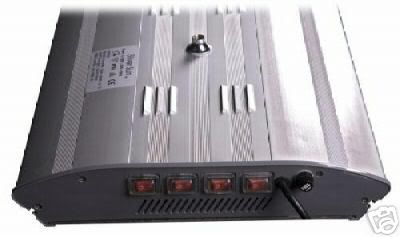shwstpr88
Member
Can you guys take a look at this light for me and let me know what you think? I have a 125 gal tank standard size 6ft long so the lights for my tank are really pricey. I currently have PC lights but want to start adding corals. I have a fairly tight budget around 300 dollars and saw this one on the auction site:


Here is what the description reads:
72'' Aquarium Light 8X 35 watt fluorescent T5
$300
Here is your chance to bid on a high quality, brand new 72'' 8X 35 watt Flourescent Aquarium Light.This aquarium light is a one of a kind very elegant fixture. This aquarium light fixture features great designer details. The unit comes with different options and modifications to suit your needs. This is one awesome light. Check out details below.
Color: Silver
Warranty: 2 years
Features included:
8X 35 watt Flourescent– all bulbs included free!
8-10k (daylight bulbs) 12' Grounded Cords included w/ 2 cords and 2 switches- so you can
add unit to timers.
Splash shield included to protect light from aquariums moisture.
2 year warranty electronic ballast
Hanging bracket assembly included free of charge so you have the
option of suspending light from your ceiling.
The silver fixture is made of aluminum so you will never
experience rust.
Reflectors:German Polished Aluminum Reflector increases reflectivity of the 3 fold.
NOTE
All the bulbs are evenly balanced for perfect light distribution throughout the
aquarium. The ballast is a highly efficient ballast that helps keep light cooler than other high output lights on the market therfore allowing higher energy efficiency.


Here is what the description reads:
72'' Aquarium Light 8X 35 watt fluorescent T5
$300
Here is your chance to bid on a high quality, brand new 72'' 8X 35 watt Flourescent Aquarium Light.This aquarium light is a one of a kind very elegant fixture. This aquarium light fixture features great designer details. The unit comes with different options and modifications to suit your needs. This is one awesome light. Check out details below.
Color: Silver
Warranty: 2 years
Features included:
8X 35 watt Flourescent– all bulbs included free!
8-10k (daylight bulbs) 12' Grounded Cords included w/ 2 cords and 2 switches- so you can
add unit to timers.
Splash shield included to protect light from aquariums moisture.
2 year warranty electronic ballast
Hanging bracket assembly included free of charge so you have the
option of suspending light from your ceiling.
The silver fixture is made of aluminum so you will never
experience rust.
Reflectors:German Polished Aluminum Reflector increases reflectivity of the 3 fold.
NOTE
All the bulbs are evenly balanced for perfect light distribution throughout the
aquarium. The ballast is a highly efficient ballast that helps keep light cooler than other high output lights on the market therfore allowing higher energy efficiency.
